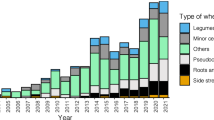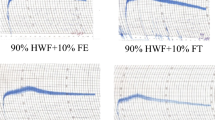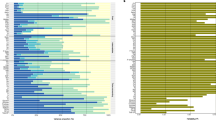Abstract
THE world-wide shortage of cereals has made it urgently desirable to attain a clear understanding of the nutritional value of bread prepared from high-extraction meals ; hence it was thought that the following information, based on experience gained in South Africa, might be of value. In this country the old custom of making bread from meals of 90–100 per cent extraction, which are ground in small local mills, has lingered on in many of our rural areas. Moreover, since May 1941 all meal used for bread-making has been standardized at an extraction-level of at least 95 per cent—usually somewhat higher.
This is a preview of subscription content, access via your institution
Access options
Subscribe to this journal
Receive 51 print issues and online access
$199.00 per year
only $3.90 per issue
Buy this article
- Purchase on SpringerLink
- Instant access to full article PDF
Prices may be subject to local taxes which are calculated during checkout
Similar content being viewed by others
Change history
24 August 1946
An Erratum to this paper has been published: https://doi.org/10.1038/158267e0
References
McCance, R. A., and Widdowson, E. M., J. Physiol., 101, 42 (1942).
Steggerda, F. R., and Mitchell, H. H., J. Nutr., 21, 577 (1941).
Kraut, H., and Wecker, H., Biochem. Z., 315, 329 (1943).
Nicholls, L., and Nimalasuriya, J. Nutr., 18, 563 (1939).
Basu, K. P., Basak, M. N., and Sircar, B. C. R., Ind. J. Med. Res., 27, 471 (1939).
Cruickshank, E. W. H., Duckworth, J., Kosterlitz, H. W., and Warnock, G. M., J. Physiol., 104, 41 (1945).
Author information
Authors and Affiliations
Rights and permissions
About this article
Cite this article
WALKER, A., IRVING, J. & FOX, F. Nutritional Value of High-Extraction Wheat Meals. Nature 157, 769 (1946). https://doi.org/10.1038/157769a0
Issue date:
DOI: https://doi.org/10.1038/157769a0



